Coffee price today March 24: Trading around record level of 95,000 VND/kg
At the end of the weekend trading session, Robusta coffee prices on the ICE Europe – London exchange reversed to decrease. The May delivery futures decreased by 27 USD to 3,358 USD/ton and the July delivery futures decreased by 24 USD to 3,264 USD/ton, both significant decreases. Trading volume was at an average level.
Similarly, Arabica coffee prices on the ICE US – New York exchange also fell. May delivery futures fell 0.85 cents to 184.85 cents/lb and July delivery futures fell 0.65 cents to 184 cents/lb, both slight decreases. Trading volume remained very high above average.
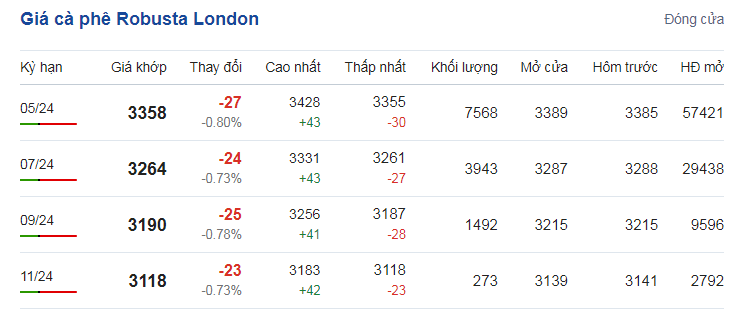
Online coffee prices on London, New York, BMF floors Updated: 03/24/2024 at 13:24:01 (delay 15 minutes)
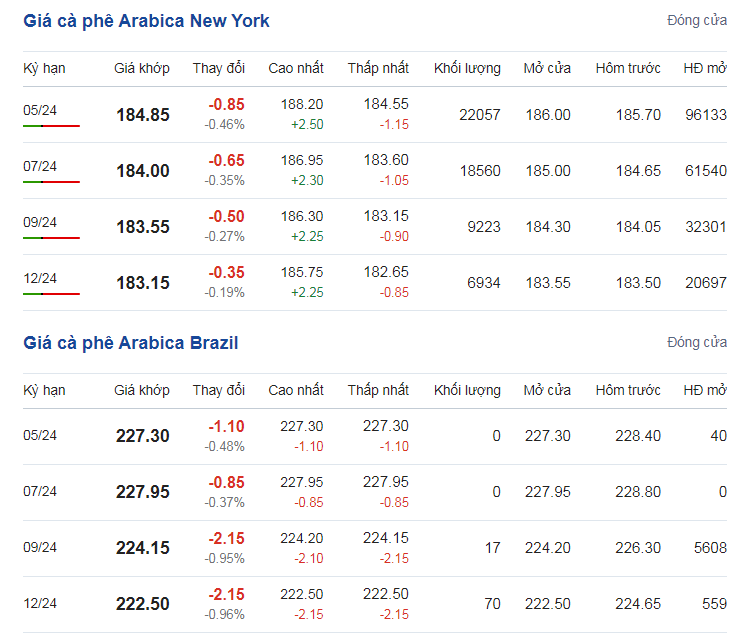
Online coffee prices on London, New York, BMF floors Updated: 03/24/2024 at 13:24:01 (delay 15 minutes)

Coffee prices in the Central Highlands market fluctuate between 94,400 - 95,000 VND/kg.
Overall, the London market had 3 sessions of increase and 2 sessions of decrease. Robusta coffee futures for May delivery increased by 50 USD, or 1.51%, to 3,358 USD/ton and futures for July delivery increased by 53 USD, or 1.65%, to 3,264 USD/ton, significant increases. Trading volume remained above average.
Similarly, the New York market had 2 sessions of increase and 3 sessions of decrease. The price of Arabica coffee futures for May delivery increased by 2.10 cents, or 1.15%, to 185.05 cents/lb and the price of July delivery increased by 2.55 cents, or 1.40%, to 184.20 cents/lb, both significant increases. Trading volume was very high above average.
Coffee prices in the Central Highlands market fluctuated between 94,400 and 95,000 VND/kg. During the week, the coffee market tended to increase. At the end of the week, localities recorded an increase of 1,800 to 2,000 VND/kg compared to the beginning of the week.
Specifically, Lam Dong province increased by 2,000 VND/kg to 94,400 VND/kg. Traders in Gia Lai and Dak Lak provinces purchased coffee at a common price of 94,800 VND/kg, an increase of 1,800 VND/kg compared to the beginning of the week. With the same increase, Dak Nong province raised the coffee price to 95,000 VND/kg. Currently, coffee prices in key provinces are recorded at around 94,400 - 95,000 VND/kg.
During the week, DXY rose slightly by 0.1% after the announcement that the roadmap for three interest rate cuts in 2024 was still intact. This has encouraged funds and speculators to return to commodity markets to increase buying. Meanwhile, ICE inventory reports on both exchanges were strongly replenished. Arabica rose to an 8.5-month high of 586,077 bags, escaping the 24-year low reported in early October 2023. Robusta rose to a 7-week high of 29,280 tons, mainly of Brazilian Conilon Robusta coffee.
The DXY continued its upward trend over the weekend after news that the Swiss National Bank (SNB) cut the Swiss Franc interest rate by 0.25% to 1.5%/year and the possibility that the Bank of England (BoE) could start cutting interest rates, before that the Brazilian Central Bank (BC) cut the Reais interest rate by 0.5% to 10.75%/year to support Brazilians to slow down sales and the Bank of Japan raised the Yen interest rate by 0.1%, ending the negative interest rate that has been in place since 2016. Prices in most commodity markets have softened.
Robusta coffee inventories issued by the London Certified and Tracked Exchange, as of Friday, March 22, increased by 2,030 tons, or 7.45% compared to a week earlier, to register at 29,280 tons (about 488,000 bags, 60 kg bags), a fairly strong increase, which contributed to the return of coffee futures prices to a downward trend.
In a December 2023 report, the US Department of Agriculture (USDA) said that Vietnam, the world’s largest producer of Robusta coffee, is expected to supply 26.6 million 60-kg bags of coffee in the 2023-2024 crop year (October 2023 - September 2024). That figure is down 12% from the USDA’s June forecast.
This forecast comes amid a record low output for the 2022-2023 crop year, at 26.3 million bags.
Output in Indonesia, the world's third-largest producer, is forecast to fall 20%.
In addition to adverse weather such as high temperatures and drought in Southeast Asia caused by the El Nino phenomenon, some farmers are switching to growing other more efficient crops such as durian, rubber, etc., which is also the reason for the decline in coffee production.
Global coffee bean consumption is expected to increase by 20% between 2023 and 2024 compared to 2013 and 2014, with notable growth in Asia. The USDA reports that consumption in major producing countries such as Vietnam and Indonesia increased by 60% and 90%, respectively, during the same period. China, the world’s seventh-largest coffee consumer, is expected to see a 130% increase.
Source



![[Photo] President Luong Cuong attends the 80th Anniversary of the Traditional Day of the Armed Forces of Military Region 3](https://vphoto.vietnam.vn/thumb/1200x675/vietnam/resource/IMAGE/2025/10/28/1761635584312_ndo_br_1-jpg.webp)

![[Photo] The 5th Patriotic Emulation Congress of the Central Inspection Commission](https://vphoto.vietnam.vn/thumb/1200x675/vietnam/resource/IMAGE/2025/10/27/1761566862838_ndo_br_1-1858-jpg.webp)
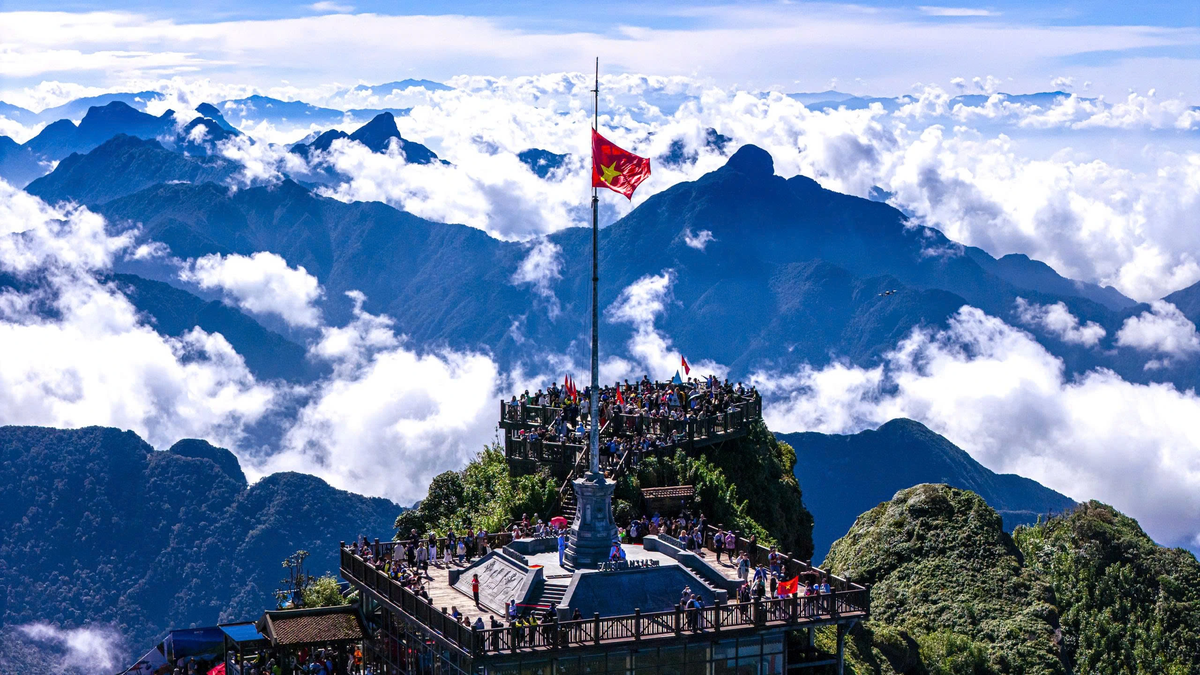

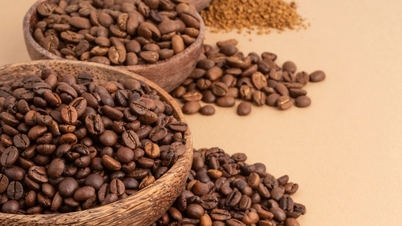

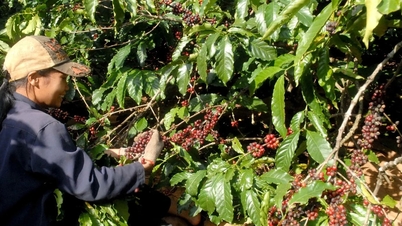




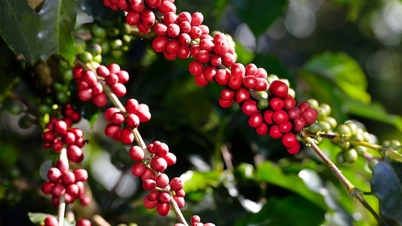





















![[Photo] Party Committees of Central Party agencies summarize the implementation of Resolution No. 18-NQ/TW and the direction of the Party Congress](https://vphoto.vietnam.vn/thumb/1200x675/vietnam/resource/IMAGE/2025/10/27/1761545645968_ndo_br_1-jpg.webp)
![[Photo] National Assembly Chairman Tran Thanh Man receives Chairman of the House of Representatives of Uzbekistan Nuriddin Ismoilov](https://vphoto.vietnam.vn/thumb/1200x675/vietnam/resource/IMAGE/2025/10/27/1761542647910_bnd-2610-jpg.webp)










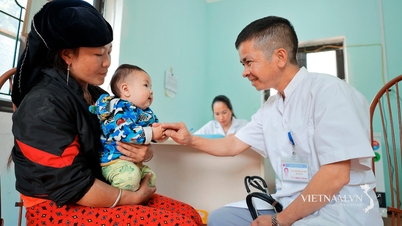













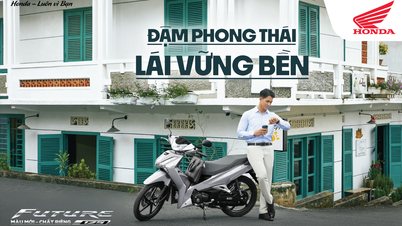
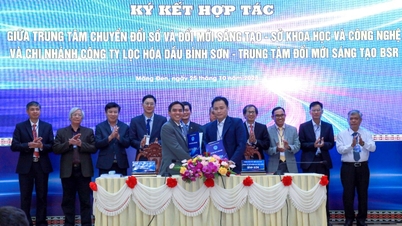
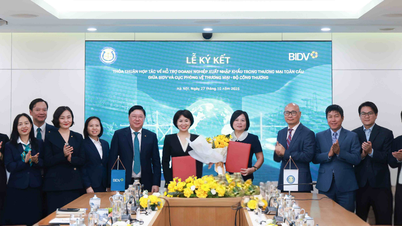


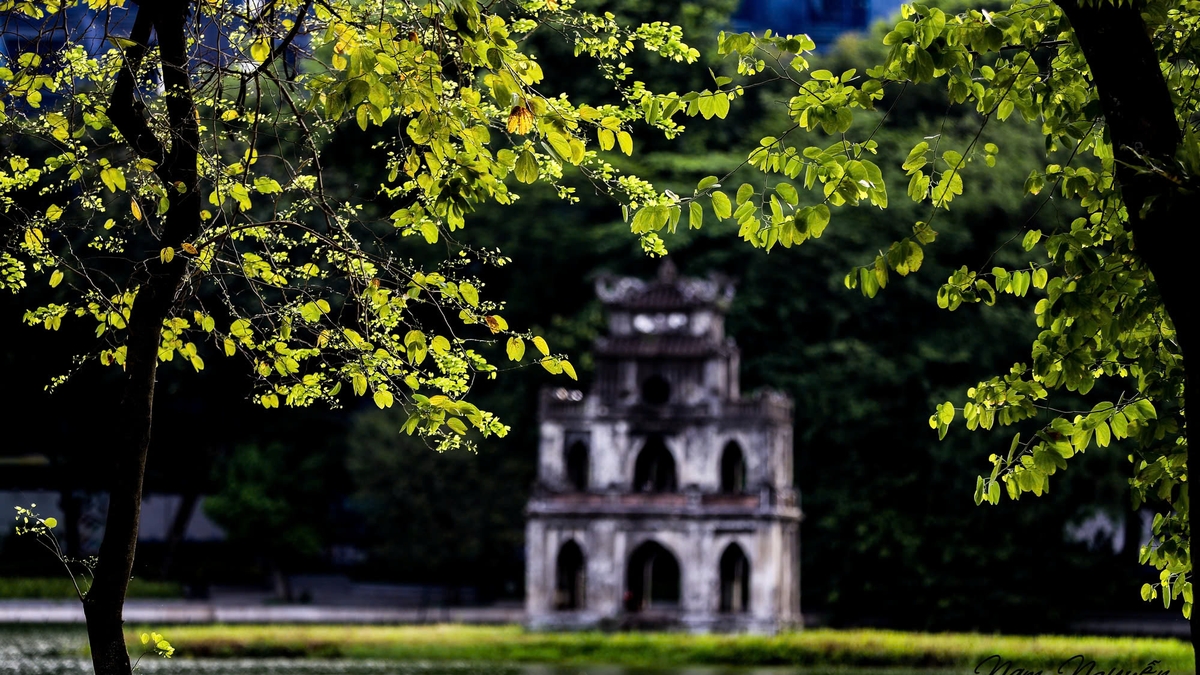








































Comment (0)